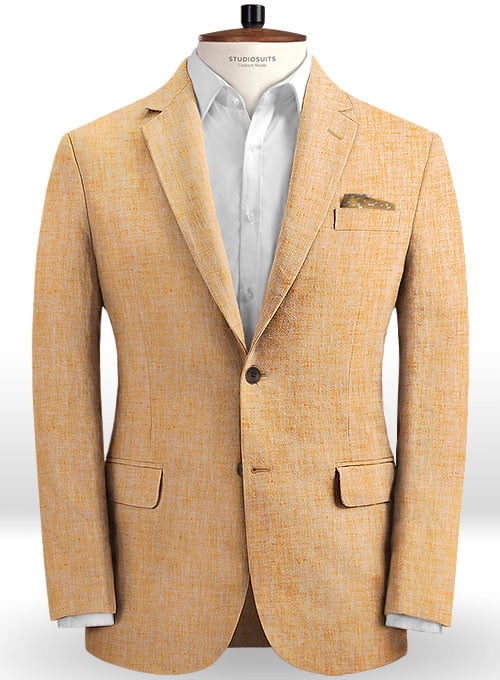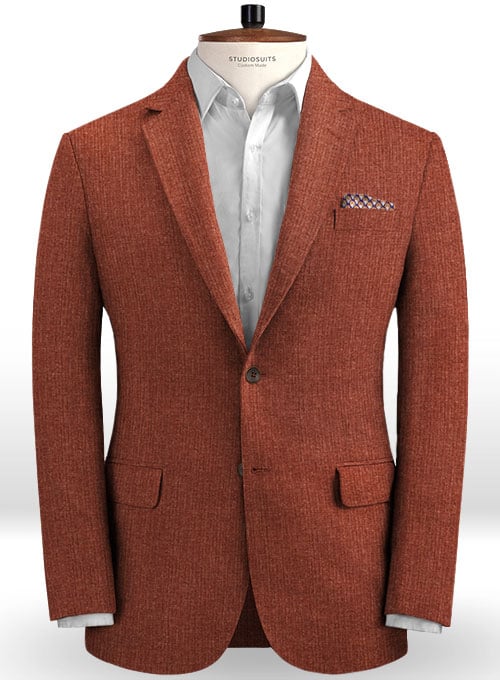From Tradition to Innovation
Celebrating over 150 years of culture
Today, linen is one of the world’s most cherished fabrics. It is used casually in garments such as dress shirts, blazers, and trousers to represent a light-hearted and unrefined style. Well-dressed denizens use it as a statement piece for summer and spring festivals. Even the creasing of the linen has become an elegant measure of status and wealth.
However, the rugged sense of ease that we’ve come to know linen to embody is only a product of a very recent fashion revolution. While today, it is unusual to find a linen suit that is not made out of some kind of bright pastel color, before Solbiati immortalized linen in the fashion world you’d be out of luck to find any color other than beige, navy and royal blue. What was once a modest family-owned venture founded in 1874, Solbiati has now become the undisputed leader in the world’s supply of linen, forever changing the way we view and wear the cloth.
Humble Beginnings
When Michele Solbiati founded his company in 1874 under the same name, they were largely committed to the popular fabrics of the time. These consisted of cotton, velvets and satin materials that were most in favor by the European elite. The company was marginal and sold to local clients within the region of Italy.
It was not until the start of the First World War, when the company was handed to Michele Solbiati’s three sons, that it evolved into the renowned textile company now seen today. Michele’s sons, Enea, Carlo, and Leopoldo made the decision to turn Solbiati into an international textile mill that sold all across the world.
As the war escalated, many businesses were not able to survive the brutal conditions. However, it was this same struggle that kept the Solbiati business alive. As demand for military uniforms and provisions increased, Italy turned to the now internationally established Solbiati for their requirements. It was this collaboration with the Italian military that allowed them to continue growing during one of the most desolate periods in human history.

The Flax Revolution
Linen is a fiber that is derived from the flax plant. The stock of a flax plant can grow up to one meter in length and has a far more durable make-up than it’s comparable cousin, cotton. The process to acquire Linen is an arduous one, but the results are certainly worth the effort.
Each season when the plant is ready to be harvested, the fiber must undergo maceration before being collected. Maceration is the disintegration of the fibrous material used to make the fabric from the rest of the plant matter. This is a result of the first rain that happens after every harvest and is one of the few traditions that are still 100% dependent on local weather conditions. Sometimes it can take a few days for the rain to come, but some seasons may take three to four months.
Originally, the only material made from Linen was coarse and rigid. In fact, before the late 1960s, Linen was almost exclusively used for tablecloths and other assorted household textiles — it was far too harsh to make any actual clothes out of.
At the time, the fashion industry was heavily saturated with artificial materials; the attention was set in an entirely different direction. Nevertheless, when the fourth-generation owner, Vittorio Solbiati, made the decision to divert the company’s resources from rayon and other artificial fabric production to Linen, it was a radical change that seemed to reignite the fashion world. His transition back to authentic, natural materials reinforced the traditional methods of sartorial craftsmanship.

Softness & Vibrance
In just 50 years, Solbiati completely transformed the world of fashion. He introduced new techniques to weave the fabric that made the linen softer and more malleable. With new methods for “tiring” the cloth and washes that made the famous “linen crepe” which represents the creasing and how the fabric elegantly drapes over the wearer, it marked a new kind of luxury.
Not long after, fashion houses from all over the world began to endorse this revolutionary shift. New colors were introduced, dyes that brought to life a rich palette of “cloud-like” colors that would go on to epitomize the iconic style of linen.
Solbiati’s enterprise dramatically increased in size and continued to reengineer their linen fabrics to ensure the highest level of excellence. The new techniques that were brought to market demonstrate the amazing creative capabilities that Solbiati possesses and cement their place in the history of fashion.
Today, this family-owned Italian mill continues to set examples as the leading producers of Linen. This amazing little blue flower now enchants the world, and with a little help from Festari for Men, you can make your next garments with the same fabric that made Solbiati a historic name throughout the world.



Contact Festari for Men about our fabric ranges from Solbiati now!

